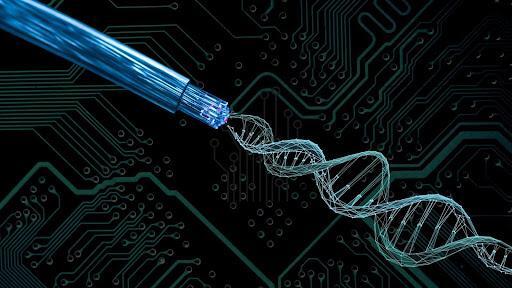
DNA’s Electron Flow May Unlock Future Biocompatible Electronics
The human body is a marvel of intricate systems and structures, and one of the most remarkable molecules within it is DNA. For decades, scientists have been fascinated by DNA’s unique properties and potential applications. Recently, researchers have made a groundbreaking discovery that could revolutionize the field of electronics: DNA’s electron flow may unlock future biocompatible electronics.
In a study published by researchers from the University of California, Los Angeles (UCLA), scientists explored the electrical properties of DNA, specifically how electrons move along its strands. The findings have significant implications for the development of smaller, more efficient, and biocompatible devices.
The Power of Electron-Vibration Dynamics
The UCLA team’s research focused on the interactions between electrons and molecular vibrations, or phonons, within DNA strands. Phonons are the vibrational modes of molecules, similar to sound waves in air. In this case, the researchers discovered that the interactions between electrons and phonons create novel pathways for electron transport.
This phenomenon is known as electron-vibration dynamics, and it has far-reaching implications for the development of electronic devices. By harnessing the power of DNA’s electron-vibration dynamics, scientists may be able to create devices that are smaller, more efficient, and biocompatible.
Unlocking the Potential of DNA
DNA’s unique structure, consisting of two complementary strands of nucleotides, provides a natural template for the construction of electronic devices. The molecule’s electrical properties have been studied extensively, and researchers have identified several advantages of using DNA as a building block for electronics.
Firstly, DNA is incredibly small, with a diameter of approximately 2 nanometers. This size makes it an ideal material for constructing devices that require precise control and miniaturization.
Secondly, DNA is biocompatible and can be easily integrated into biological systems. This property makes it an attractive material for developing devices that can interact with living organisms.
Lastly, DNA’s electrical properties are highly tunable, allowing researchers to manipulate its conductivity and other properties to suit specific applications.
Future Applications of DNA-Based Electronics
The potential applications of DNA-based electronics are vast and varied. Some potential uses include:
- Biomedical Devices: DNA-based electronics could be used to develop devices that interact with the human body, such as sensors, actuators, and micro-electromechanical systems (MEMS).
- Energy Harvesting: DNA’s unique electron-vibration dynamics could be harnessed to develop novel energy harvesting technologies, such as nanoscale generators and piezoelectric devices.
- Quantum Computing: DNA’s ability to store and transmit information could be exploited to develop new quantum computing architectures.
- Neural Networks: DNA-based electronics could be used to develop novel neural networks that mimic the human brain’s complex neural structures.
Conclusion
The discovery of DNA’s electron flow and its potential for unlocking future biocompatible electronics is a significant breakthrough in the field of materials science and electronics. By harnessing the power of DNA’s unique electron-vibration dynamics, scientists may be able to create devices that are smaller, more efficient, and biocompatible.
As researchers continue to explore the potential of DNA-based electronics, we can expect to see the development of novel devices and technologies that will transform industries and improve our daily lives. The future of biocompatible electronics is bright, and DNA’s electron flow is leading the way.
Source:






